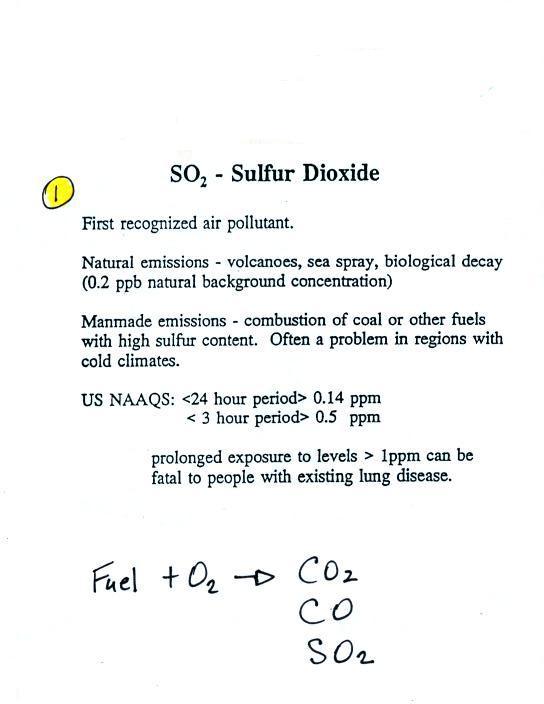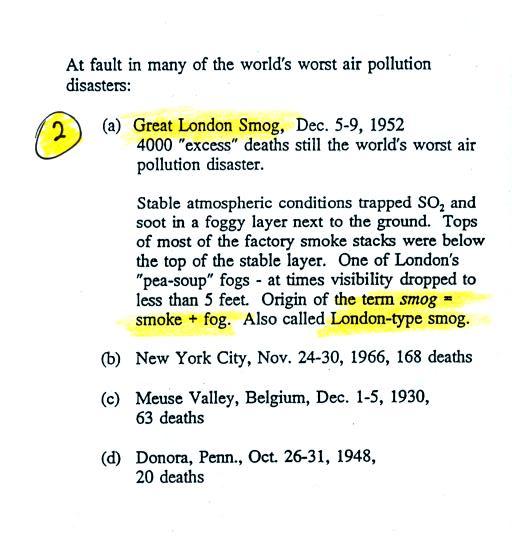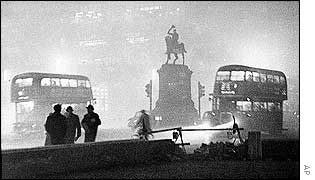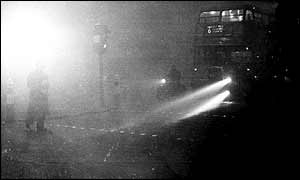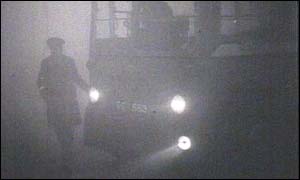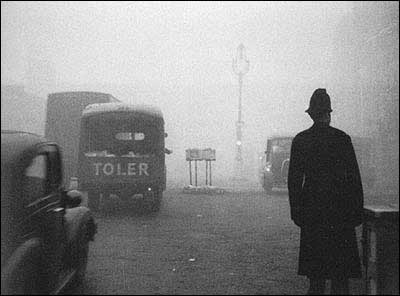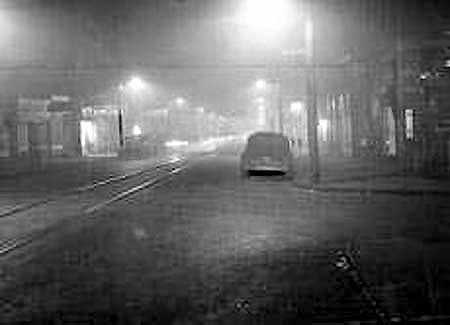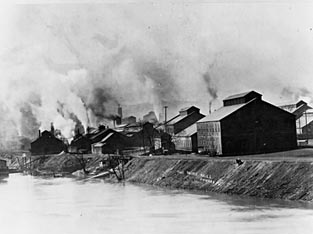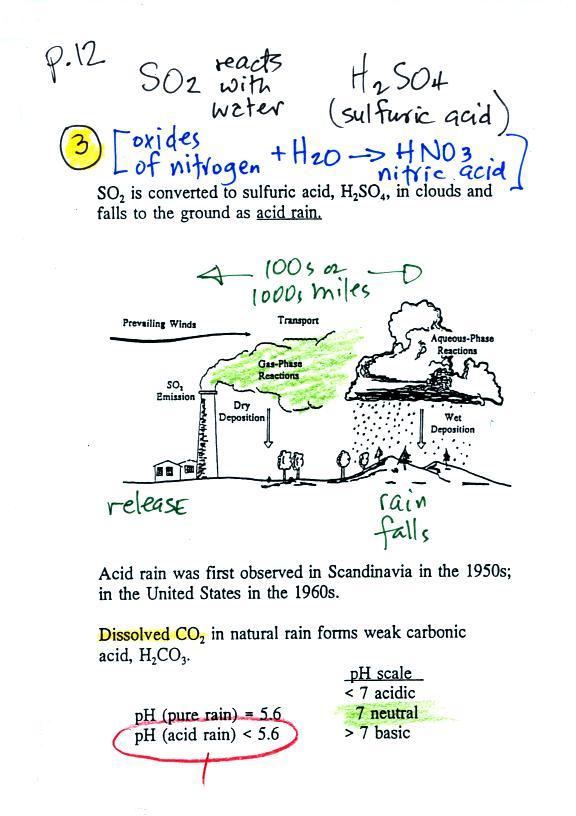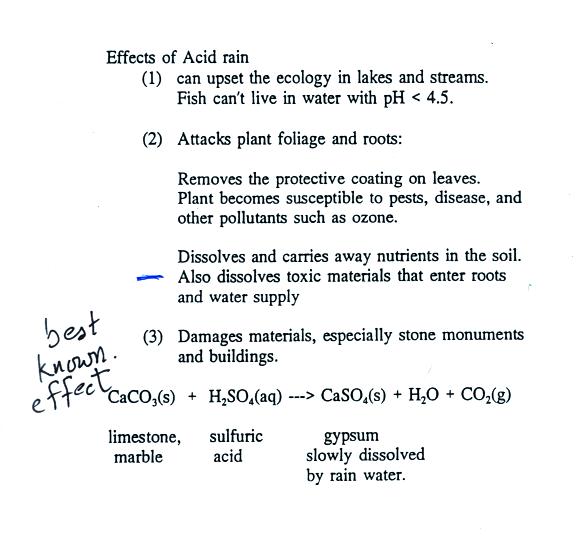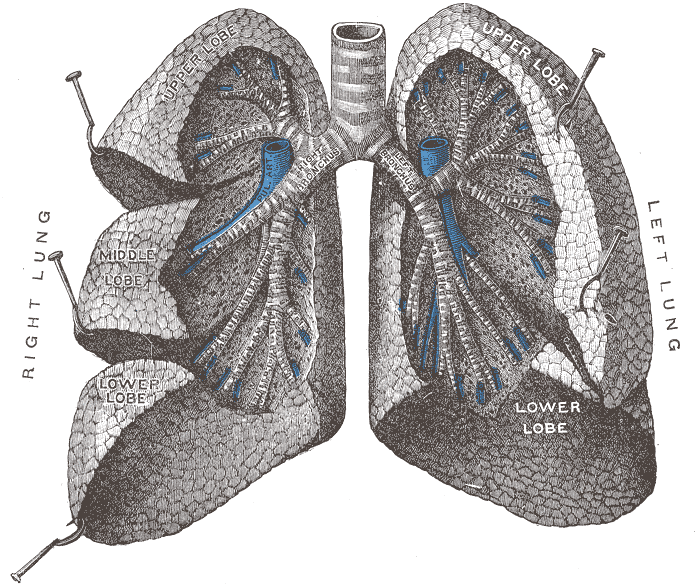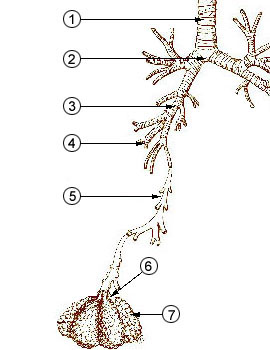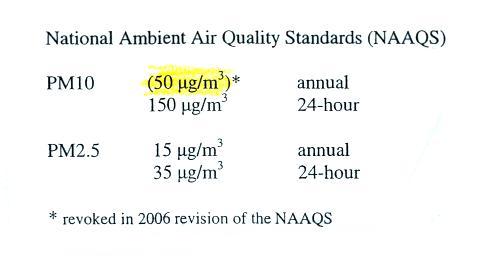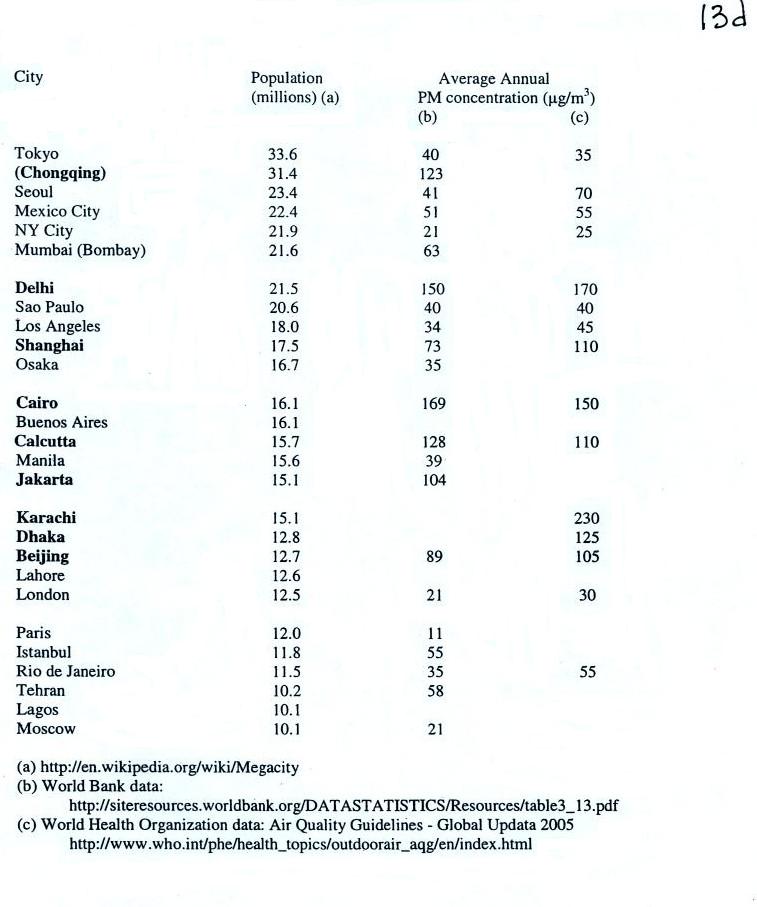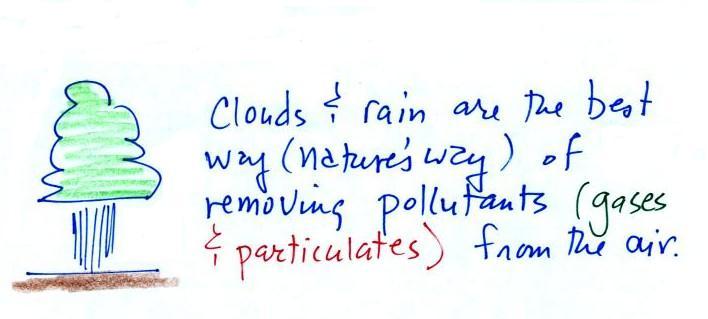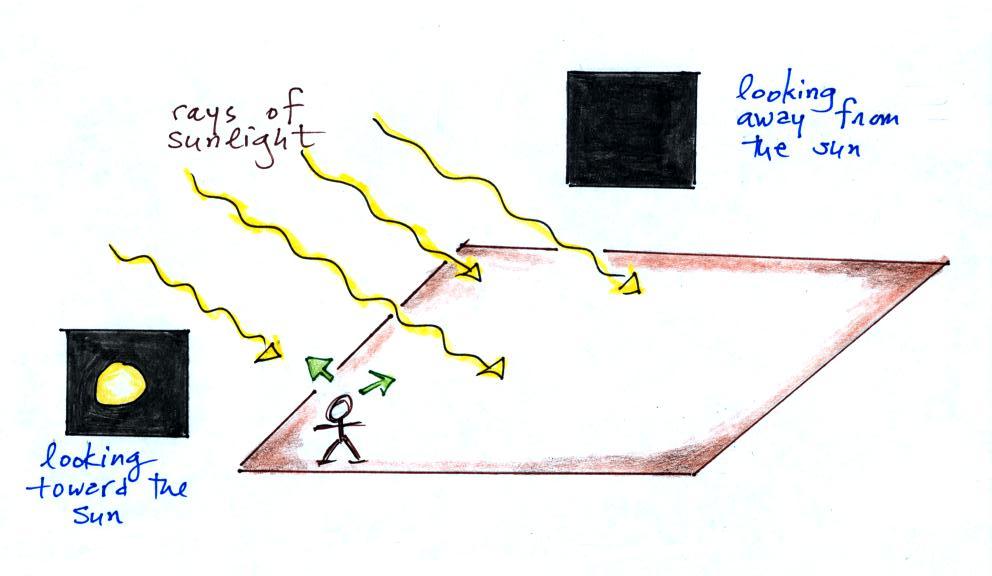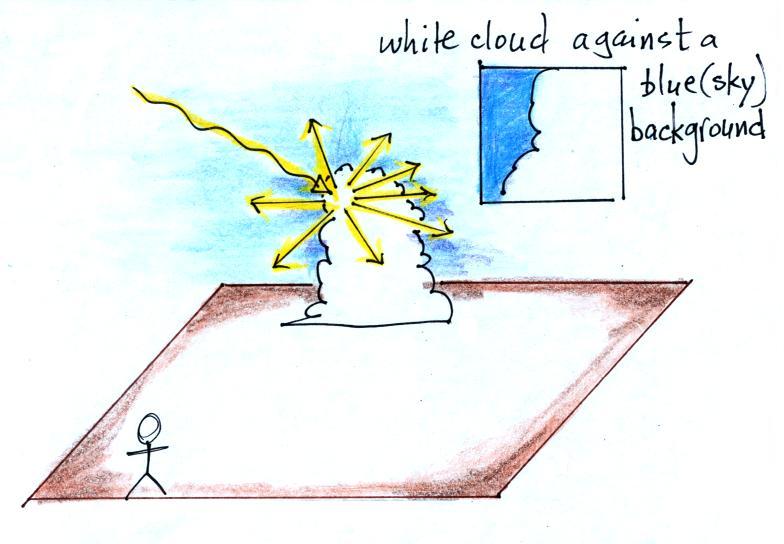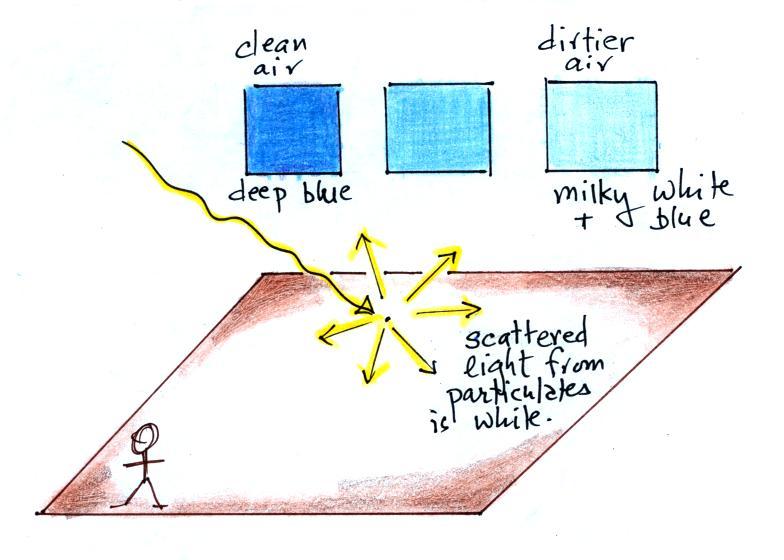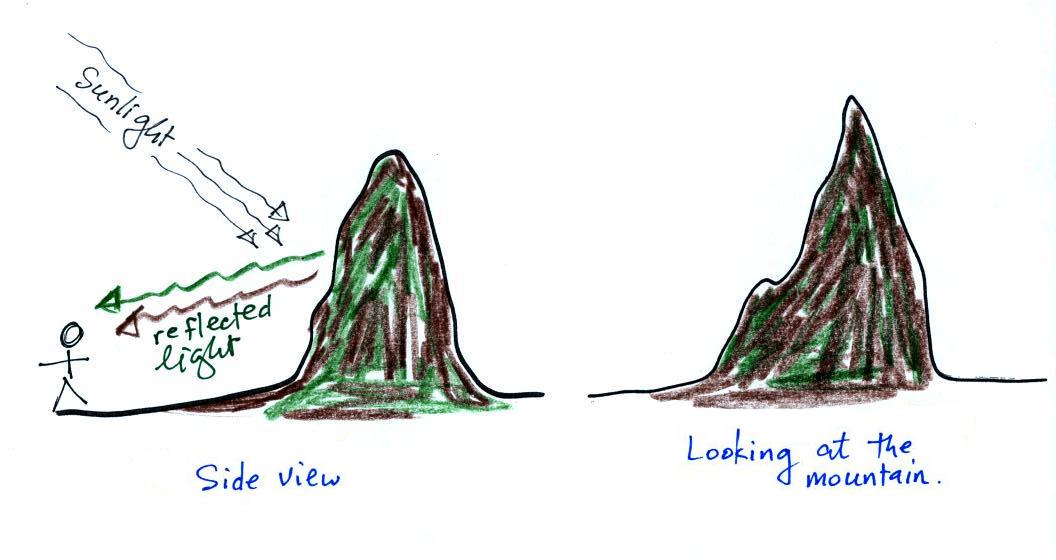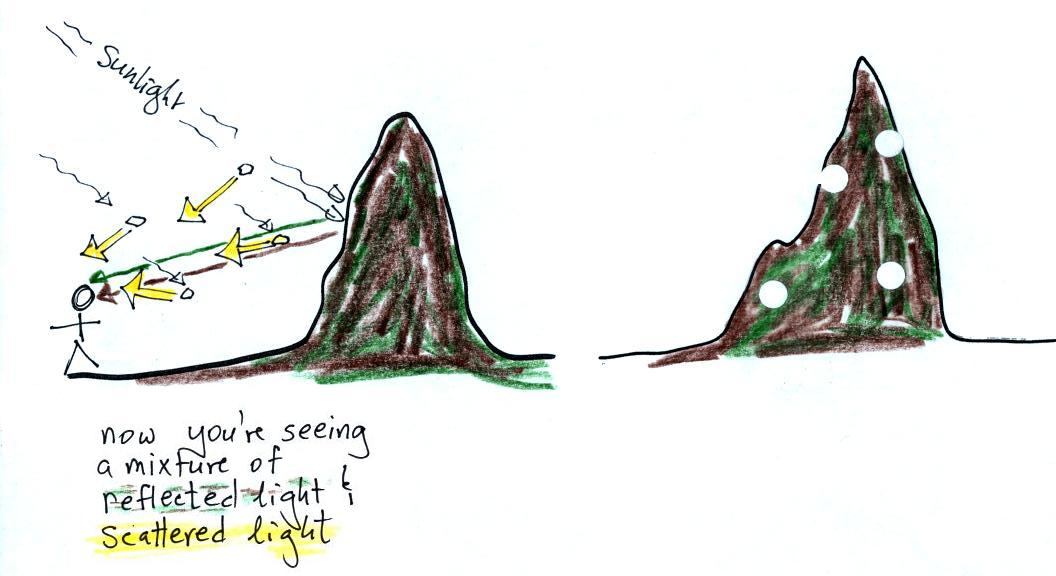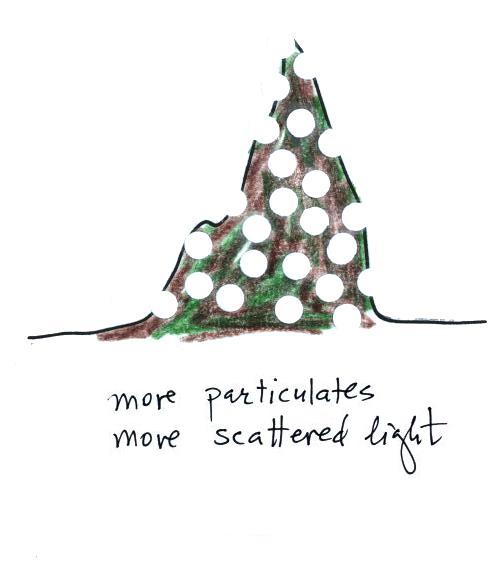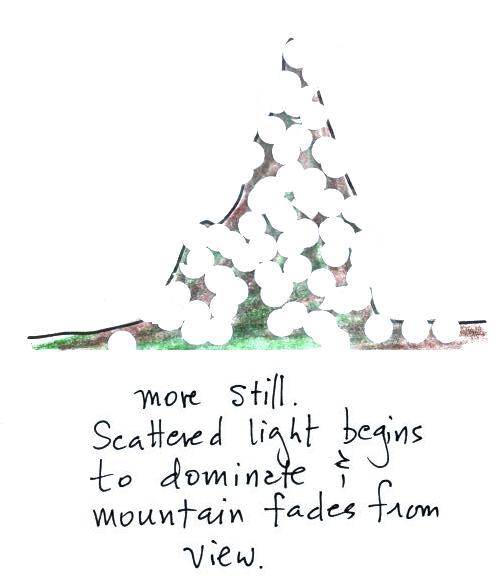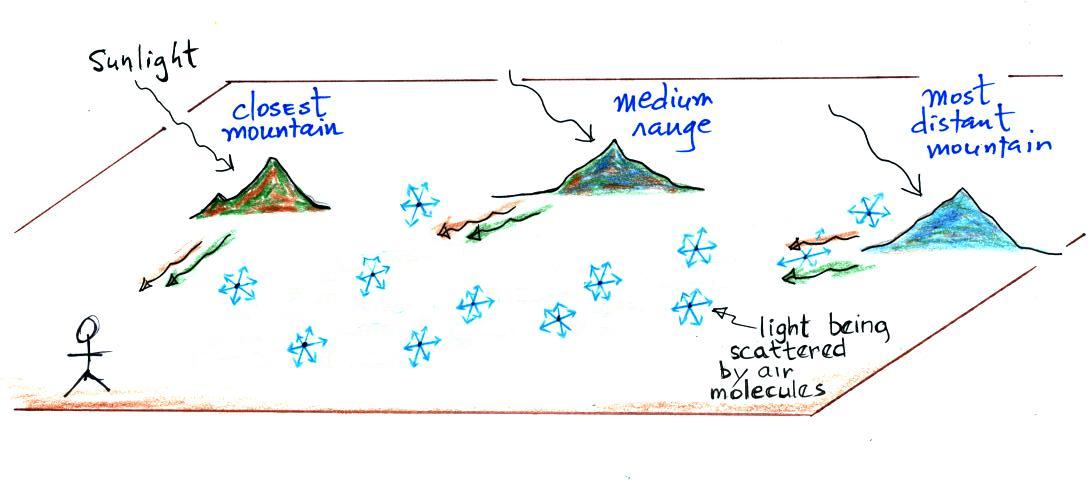The last
pollutant that we will cover is Particulate Matter (PM) - small solid
particles or drops of liquid (but not gas) that remain suspended in
the air (particulates are sometimes referred to as aerosols). The
designations
PM10
and PM25 refer to particles with
diameters less than 10 micrometers and 2.5 micrometers,
respectively. A micrometer (µm) is one millionth of a meter
(10-6
m). The
drawing below might give you some idea of what a 1 micrometer particle
would look like (actually it would probably be too small to be seen
without magnification). You'll find some actual pictures and more
information at this source.
Red
blood
cells
are
6-10
µm
in diameter.
A nanometer (nm) is 1000 times smaller
than a micrometer (10-9 m).
An atom is apparently 0.1 to 0.3
nm across, depending on the particular element.
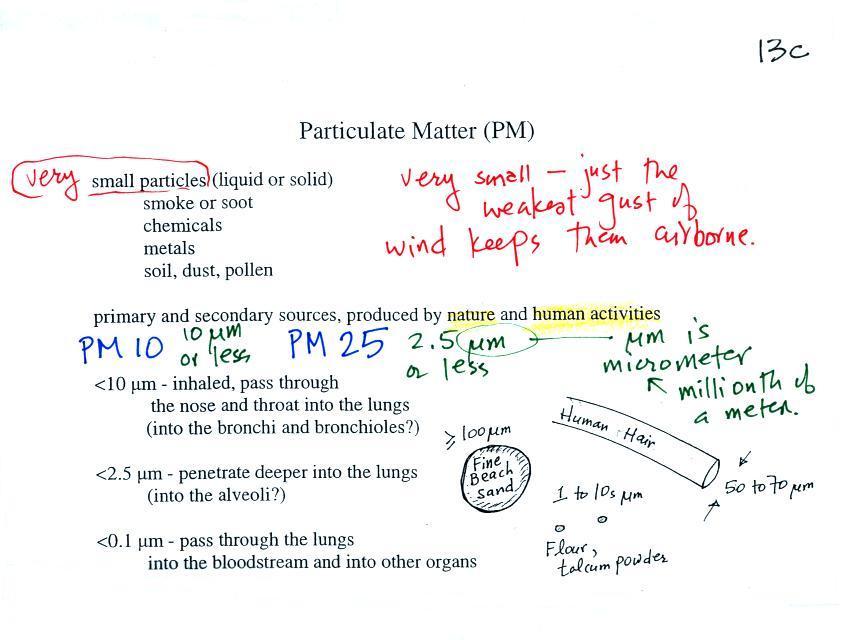
Particulate matter can be produced
naturally (wind blown dust,
clouds above volcanic eruptions, smoke from lightning-caused forest and
brush fires). Human activities also produce particulates.
Gases sometimes react in the atmosphere to make small drops or
particles (this is what happened in the photochemical smog
demonstration). Just the smallest, weakest gust of wind is enough
to keep particles this small suspended in the atmosphere.
One of the main concerns with
particulate pollution is that the small
particles might be a health hazard ( a health advisory is sometimes
issued during windy and dusty conditions in Tucson)
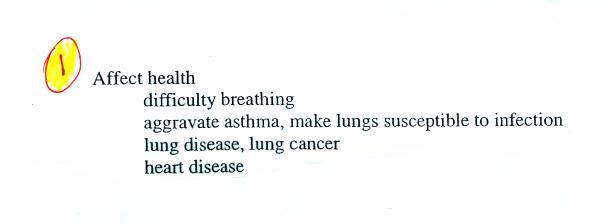
Particles with dimensions of 10 µm
and less can be
inhaled
into the lungs (larger particles get caught in the nasal
passages). These
inhaled particles may be poisonous, might cause cancer, damage lung
tissue, or aggravate existing
repiratory diseases. The smallest particles can pass through the
lungs and get into the blood stream (just as oxygen does) and damage
other organs in the body.
The figure below identifies some of the parts of the human lung
mentioned
in the figure above.
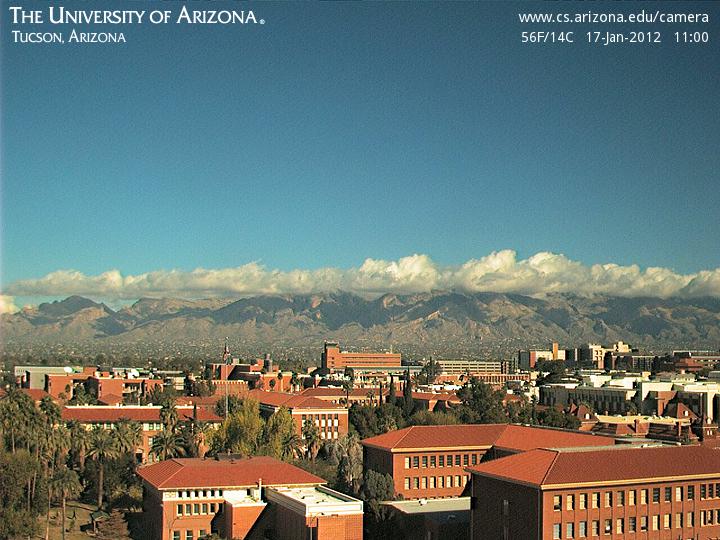
Some rainy weather had
occurred just a day to two earlier and the visibility was very good.
Windy weather a few days later
stirred up a lot of dust that was carried into town.
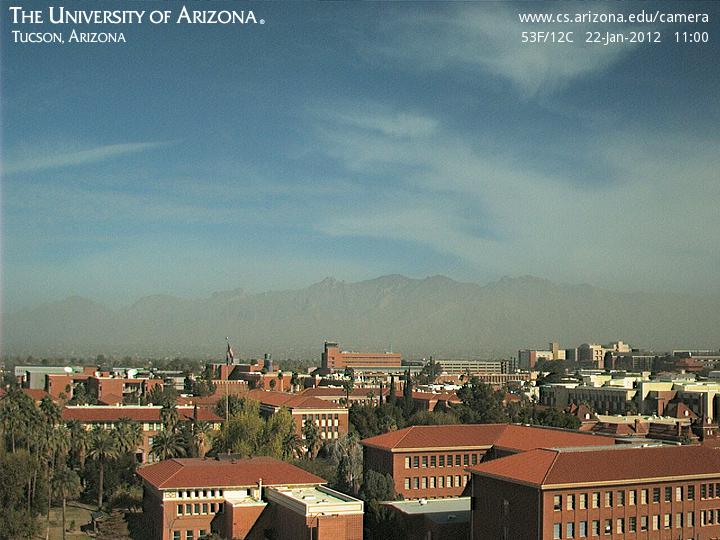
This photo was taken the day after
the windy weather. There is still a lot of dust in the air and
the visibility is pretty bad.
And here's more
material that we didn't cover in class.
Now we will try to understand how particulates affect
visibility.
We
need
to
first
learn a little bit more about
scattering (we're really going to beat this concept to death).
You can find all kinds of things in the sky: air,
particulates, clouds, etc. But first let's imagine
there isn't an atmosphere. No air, clouds, particulates, nothing.
If you went outside and looked at the sun (you
shouldn't do that of course) you'd see a bright sun against a black
background. You'd see the sun because you're looking back in the
direction of one of the rays of light coming from the sun.
If you look away from the sun and toward the sky you wouldn't see
anything. The sky would appear black. That's because
there's nothing to scatter the sunlight. If you remember the
light scattering demonstration with the laser this is just like when
you couldn't see the laser beam as it traveled across the front of the
classroom. You couldn't see the beam unless something was put
into the beam to scatter some of the laser light.
In
the
next
picture
we'll add an atmosphere. Just air molecules, no
particles, or clouds.
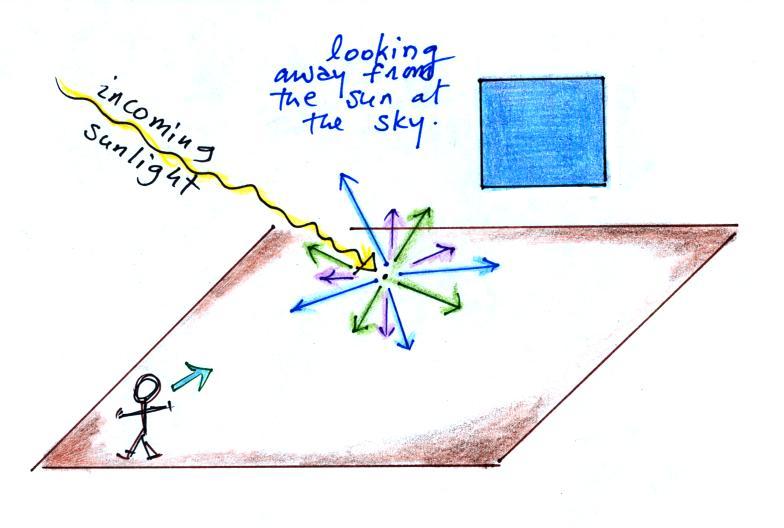
Air molecules scatter light. We didn't see this light in the
laser demonstration because the laser light scattered by the air was
too weak. But when you're dealing with intense sunlight traveling
through a lot more air in the atmosphere you can see the scattered
light.
The incoming sunlight is white. White light is a mixture of all
the colors. Air molecules scatter the shorter wavelengths (violet
blue green) more than
the longer wavelengths (yellow orange red). This is depicted
above. Air molecules scatter light in this way because they are
very small (much smaller than the wavelength of visible light).
Violet has the shortest
wavelength and is scattered the most. However there isn't as much
violet in sunlight as there is blue and green. There's a lot of
green light in sunlight (more than any other color as a matter of fact)
but it isn't scattered as readily as blue. So the end result is
that we see blue light coming from the sky. This is why the sky
is blue. When the air is clean (from of particulates), the sky
has a deep blue color. Here's
a
little
more
explanation of
why the sky appears blue.
Next we'll add a cloud to the picture. As we saw in the laser
demonstration, cloud droplets and ice crystals are good scatters of
light. Cloud droplets and ice crystals though are much larger
than air molecules. Because of this they scatter all the colors
in equal amounts.
When white light strikes a cloud, white light is scattered and
reflected. This is why clouds are white (with some shades of grey
mixed in if the cloud is thick).
What about particles? Particulates are much bigger than air
molecules and a little bit smaller than cloud droplets. They
scatter light is the same way that cloud droplets and ice crystals
do. The scattered light from particles is white.
What do you see now when you look at the
sky. It depends on how much particulate matter is in the
air. When the air is clean and doesn't contain much particulate
matter the sky is a deep blue. As the concentration of
particulates increases you mix in more and more white light. The
color of the sky can change to a whitish blue when the particulate
concentration is high.
OK
now
let's
look
at how the appearance of some nearby mountains
might
change as more and more particles are added to the air. We're
going to try to understand why increasing amounts of particles can
reduce visibility.
In this first picture we start out with clean air. When
we
look
at a mountain we see the light that is reflected off the soil and trees
on the mountain (shown at left above). I've colored this
reflected light green and brown. When you look at the mountain
it's green and brown (right figure above).
Now we'll add some particles. When you look at the
mountain
you see brown and green light plus some
white light that is coming from sunlight being scattered by the
particles. Some white specks of light have been superimposed on
the view of the mountain at right.
More particles, more scattered
light, and more white light being mixed in with the brown and green
reflected light.
Even more particles. Now the
white light from scattering from particles begings to dominate.
Eventually it becomes difficult to even make out the mountain because
of all the scattered light. Light from the mountain also runs
into particles on its way toward your eyes and gets redirected so that
you don't see it. Of course there was considerable
artistic license used in this explanation.
One last thing (not covered in class
on Wednesday),
and I'm probably really trying your patience.
You might think that when the air is clean that visibility might
be unlimited. That isn't the case. Scattering
of sunlight by air molecules alone puts a limit on
visibility. The following figure tries to explain why this is so.
The nearby mountain appears
green
and brown.
You are
mostly seeing sunlight reflected off the mountain.
As the mountain
gets further away you start seeing increasing amounts of blue light
(sunlight scattered by air molecules in between you and the
mountain) being added to the brown and green reflected light.
This is because there is more air between you and the
mountain. The mountain at medium range now appears
brown, green, and blue. As
the mountain gets even
further away the amount of this blue light from the sky
increases.
The most distant mountain in the picture above is now blue.
Eventually the mountain gets so far away that you only see blue light
from the sky and none of the light reflected by the mountain
itself. The mountain has faded from view.
Here's a photograph of the Blue Mountains in Australia (source
of this image)
If you look closely I think you can see 5 mountain ranges in this
picture. Notice how they became fainter and fainter and lighter
and
lighter blue. It is becoming hard to distinquish mountain range 5
from
the blue color of the sky.
That pretty much finishes this first section on the composition of
the atmosphere and air pollutants. Click on this upcoming topics link if you'd
like to see where we're going next.
